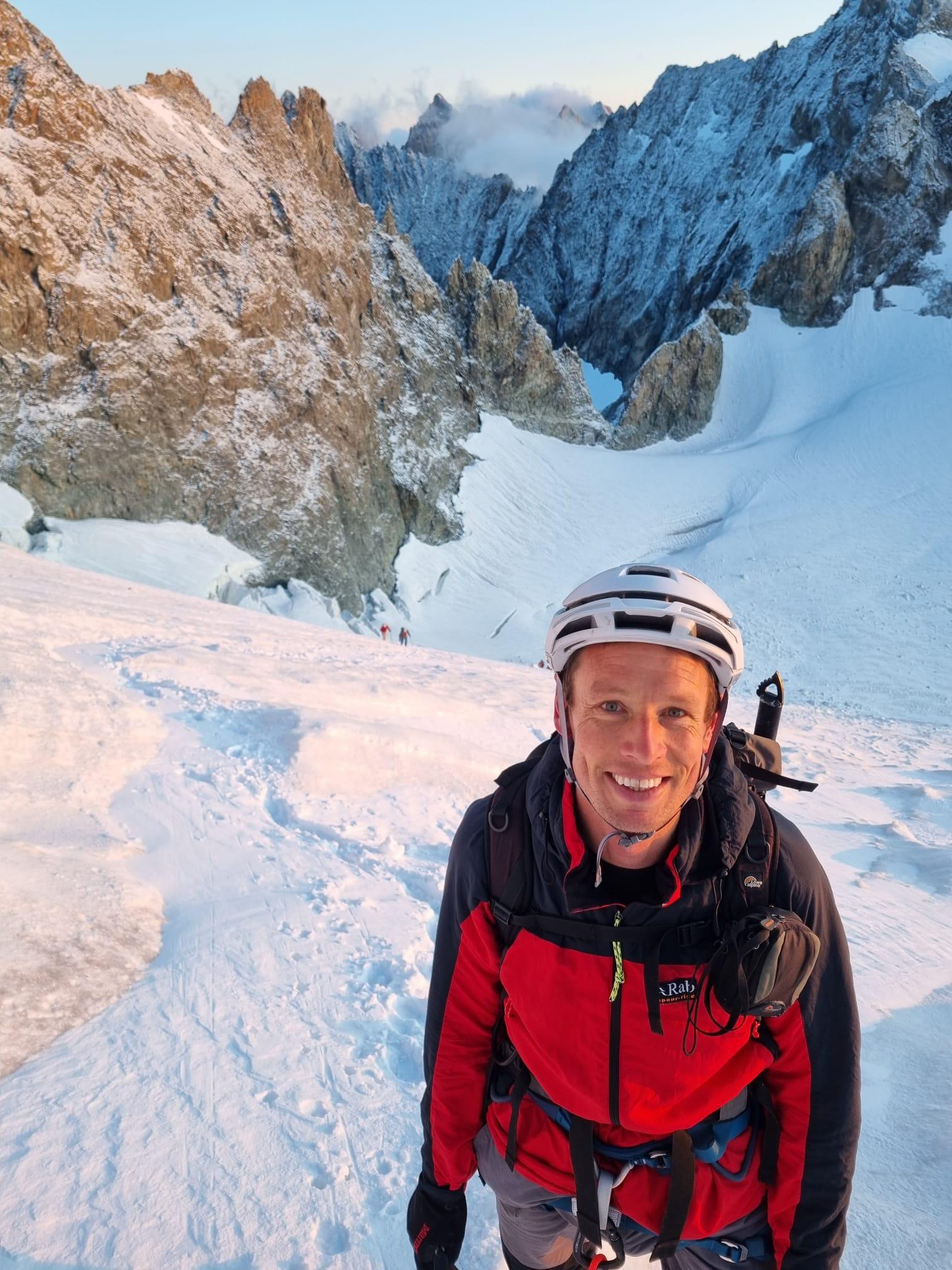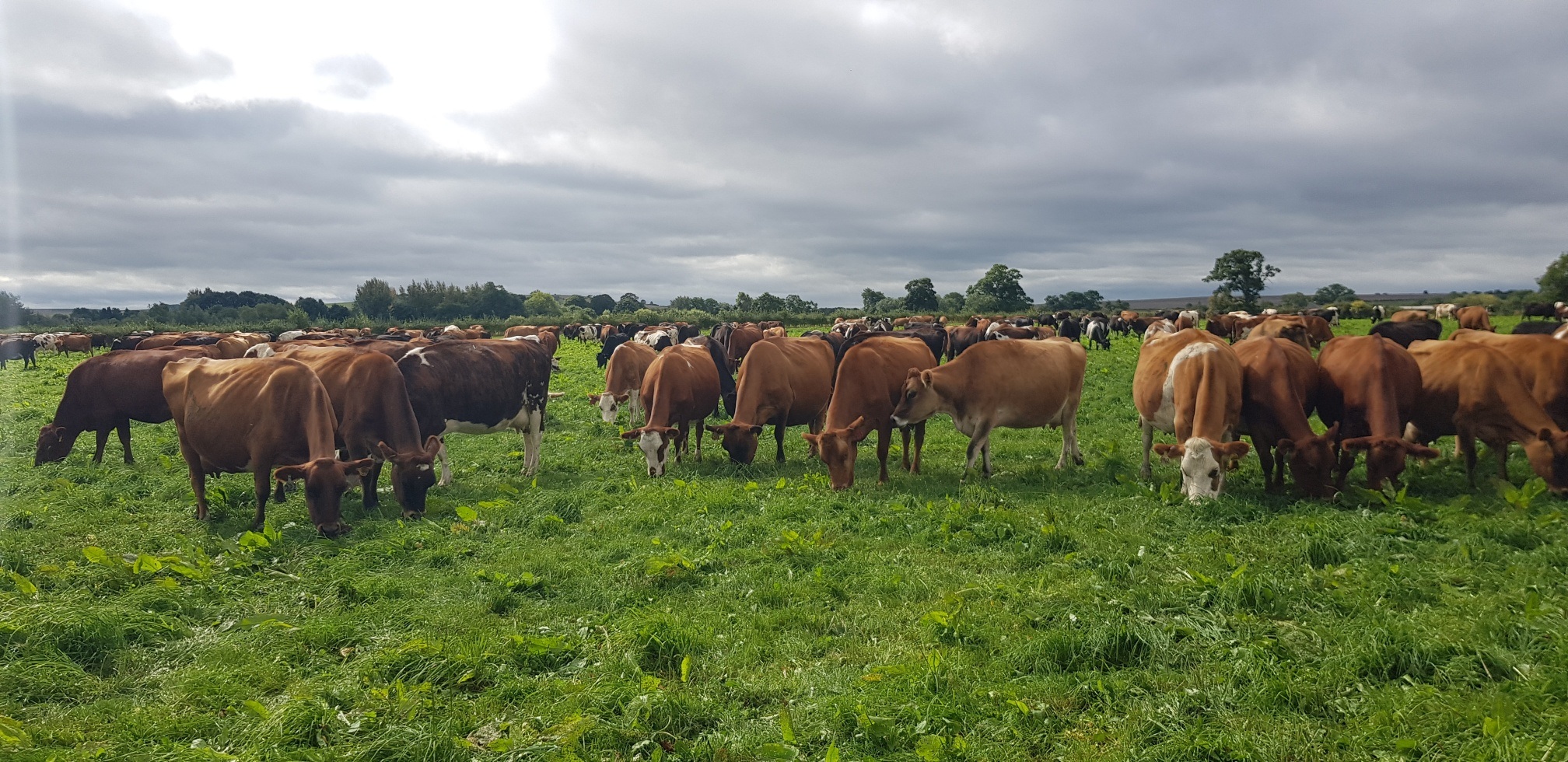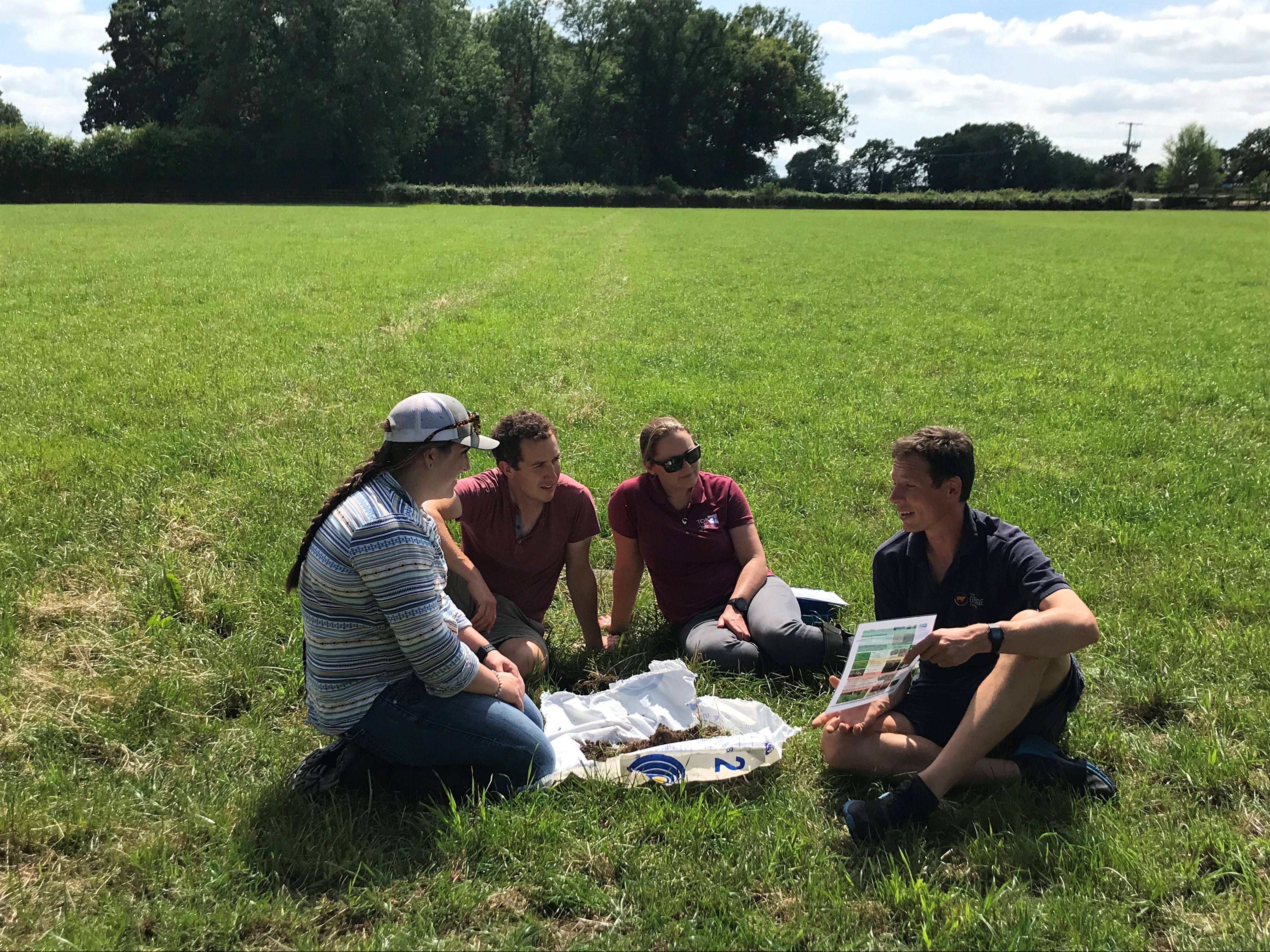Meet Ed Bailey, Chair of Directors at Vet Sustain & Clinical Director at The George Farm Vets
Ed Bailey
I’m a vet working full time in farm animal practice in Malmesbury, Wiltshire. I’ve been at the George Farm Vets for 15 years now and feel lucky to work in a job that keeps getting better with time. One of the joys of farm practice is becoming part of a thriving community, where you build lasting relationships. The mutual trust and understanding that comes from supporting someone’s farm business over many years is very rewarding and is also a privileged position from which you may have a wide beneficial influence. You are well placed both as an adviser and a facilitator of peer-to-peer knowledge exchange.
For me, a typical work day starts with a visit to one of my regular dairy farms, which I visit fortnightly or monthly. This will usually involve some fertility work, plus reviewing any current health problems. We may review some farm data or look at how they have fared in our monthly benchmarking topic. Milk quality, production level and grazing challenges will all be discussed. I may have another such visit or go to one of my sheep or beef clients. Again, most work here is proactive – I see very few sick animals or emergencies except out of hours. I do some TB testing most weeks. While objectively hard and tedious, this has been hugely valuable in building relationships with farmers, supporting them at a difficult and stressful time, and also providing an opportunity to really understand the farm through conversations over many years. I am on call one night per week and every 7th weekend. Our out of hours work has got gradually much quieter over my time in practice, with a fraction of the amount of calls we used to receive, despite looking after more animals. Breeding, feeding, husbandry and farmer skill level have all helped here. Caesareans and displaced abomasa are seen as avoidable rather than inevitable, and planning to prevent these has been very rewarding. I have 2 children at primary school, and I have 2 half days per week to collect them and spend time together. The flexibility provided by the George Vets to allow this, plus the reducing burden of being on call, have helped me to retain my work-life balance and thus my enjoyment of the job. I also find running, cycling, climbing, cooking and meditation to be very helpful in retaining my health and sanity.

In 2021 I got involved with the Food and Farming working group of Vet Sustain, and also took on the role of Sustainability Lead in our large independent mixed practice. I had for some time been very active in my personal efforts to address my contribution to the twin crises of the climate emergency and biodiversity loss and was keen to see if I could have a wider impact. There is a feeling of helplessness in the face of such big, complex problems. Positive action is an empowering response, though often challenging to implement. Nevertheless, since then the George Vets has achieved Silver Level accreditation from Investors in the Environment, and I am working with our Sustainability Group to reduce our carbon footprint on top of the excellent waste reduction and community initiatives we have already put in place. Vet Sustain has been a wonderful organisation to meet some amazing veterinary professionals working to meet the 6 Veterinary Sustainability Goals. I have helped the Food and Farming group create some brilliant resources to enable and inspire our colleagues, and more recently have taken over from Gudrun Ravetz as chair of the board of directors. We are now planning how to build on a very successful first 5 years to continue to grow the organization and widen our impact.
My advice to any veterinary professionals hoping to drive sustainability in their roles would be to find an area which they are particularly interested in and start there. Having done so, find common ground with other people in your business to help bring people with you. For example, colleagues may be less interested in the climate impact of inhalational anaesthetic agents, but driven by the clinical or economic benefits of low-flow systems. In ambulatory practice, improving logistics, vehicle choice and driving habits will not only reduce your emissions but your fuel and vehicle repair bill and make your employees safer. Having used the carbon calculator to work out our carbon footprint as a business, travel represents two thirds of our impact. If I could wave a magic wand to change one thing to make us more sustainable, it would be full electrification of our fleet (in combination with a proper charging network of course!)
My primary area of professional interest is in grazing ruminant systems. Here, the interaction between livestock and the environment is the key to both a profitable, resilient farm and a healthy biodiverse ecosystem. I feel sad that in recent years farmers and environmentalists are painted as having opposing interests. Of course, there are examples of bad practices to be found, and it is right that regulations to support critical needs such as water quality and animal welfare are enforced. However, in my experience, most farmers are strongly attached to both their livestock and their land and are conscious of their position in the wider community. The silent majority are doing their best, in extremely difficult economic circumstances, to look after their animals and their land to derive a modest livelihood. Demonisation inevitably leads to defensiveness and mutual misunderstanding. The farm vet therefore has a wonderful opportunity, from a position of trust, to have conversations about how soil health and biodiversity can drive farm resilience and profitability, while simultaneously reducing environmental impact.

In addition to working with several grazing-based farmer discussion groups, I undertook the Developing Grass Expertise training with AHDB in 2022, to deepen my understanding of grazing, soils and consultancy. This has been really helpful, particularly with the introduction of the Sustainable Farming Incentive schemes to replace the old area-based subsidy. Working with farmers who have been early adopters of multispecies swards and agroforestry practices has been very rewarding, with survey data from ecology reports demonstrating increasingly healthy bird and invertebrate populations. The drought resilience, shade and shelter provided by such systems are of great interest to livestock farmers trying to cope with climate change, as is the soil porosity for infiltration rate in heavy downpours. Capturing water in the soil to avoid run-off, then holding onto it to provide enough moisture for growth in prolonged dry spells is already extremely important in more brittle climates and is something that we are having to learn too. For this to be achieved, we need the structure, chemistry and biology of the soil to be right. As vets, we need to broaden the view of ‘animals under our care’ to include all the trophic levels which may be influenced by our advice and recommendations. If we can cause a depletion of the soil food web through use of veterinary pharmaceuticals or husbandry advice, then that is something which needs to be balanced against the livestock health and performance which is our traditional comfort zone.
By exerting our influence to adopt sustainable farming practices, we will also be fulfilling our need to be observing responsible use of medicines and putting welfare and preventive healthcare at the centre of our approach. Hopefully, the question of “what can I use to treat ……” will be gradually replaced with “how can I change what I’m doing so that I no longer have to treat”.
